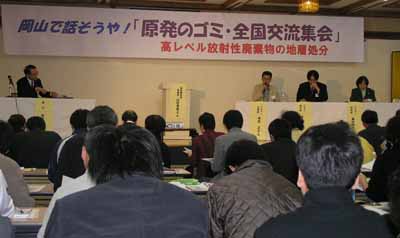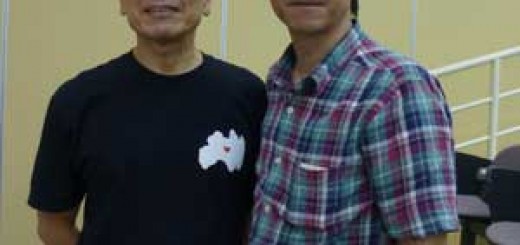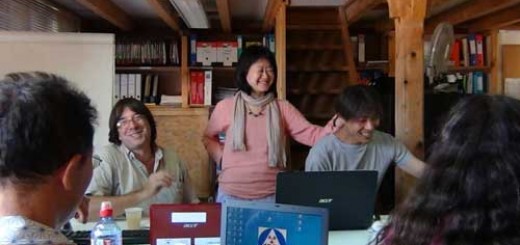Group Introduction No to Radioactive Waste! Committee for a Prefectural Ordinance Nuke Info Tokyo 118
By Members of the Group
 |
|
The conference shown in the above photo was held in Okayama City in February 2007. The purpose was to spread the success of the campaign in Okayama Prefecture to the rest of Japan. 300 people attended from Japan and South Korea.
|
In 1981 experiments for a high-level radioactive waste dump were carried out at the Sanpo mine in Okayama Prefecture. This was the first of many attempts to site a high-level waste dump in the Prefecture. A signature campaign was begun in 1990 to establish an ordinance to keep high-level waste out of Okayama, but although over 340,000 people signed the petition, the ordinance still has not been adopted. Nevertheless, the campaign continues and the group takes its name from this campaign.Kamisaibara Village, on the border of Okayama and Tottori Prefectures, was the site of an experimental uranium enrichment facility owned by the Power Reactor and Nuclear Fuel Development Corporation (PNC) (now Japan Atomic Energy Agency (JAEA)). In 1998, after PNC was reorganized, it was decided that the facility would be closed. In April 1996 the local mayor was quoted as saying that he was hoping for projects that would attract subsidies to the village and that a high-level waste dump was one possibility, then in 1998 the mayor and the speaker of the local assembly suggested to PNC that a dump be located on the former uranium enrichment site.
It was at that time that we first interviewed the mayor to find out his true motive in submitting the request to PNC. He said, “Your group is campaigning very fiercely. I imagined you to be a fearsome bunch, but I am surprised to find that you are ordinary people.” From then on we were always careful to approach local governments as ordinary people and to explain in ordinary language. The first time we leafleted all houses in Kamisaibara Village was in 1999. Some people refused to listen to us. We felt the limitations of outsiders trying to persuade village people, but we asked them as fellow human beings to understand our concerns about radioactivity and pointed out that people downstream were affected too. Every year thereafter we have continued to leaflet all homes in the village. Nowadays people thank us for taking the trouble to come to their village.
The Diet passed the high-level waste disposal law in 2000 and in October that year the Nuclear Waste Management Organization (NUMO) was established. In 2001 it was decided that the dump site would be chosen through public applications, with the mayor as the respondent. We feared that these would be “public applications” in name only, while in reality local politicians and other influential people would lay the ground work. It seemed to us that “public applications” were being called with Kamisaibara in mind. The village’s 1998 request for public projects, its extensive land holdings, its long association with PNC and the population’s familiarity with radioactivity made Kamisaibara a prime candidate.
We calculated that applications would be called around the end of 2002. We chose November to visit the mayors of all 78 municipalities in Okayama Prefecture. Sure enough, public applications were called on December 19th, but by then we had already visited most of the municipalities.
Be sure to meet the mayors and explain in simple language the dangers of high-level waste and geological disposal! This is our iron-clad principle. By February 2003 we had received replies from 77 mayors saying they would not apply to host the dump. The only hold-out was Kamisaibara. Whenever there is a change of mayor or when municipalities merge we resubmit our demands. We now have replies rejecting the dump from 27 municipalities, including Kagamino Town, the post-merger name of Kamisaibara Village. (There are far fewer municipalities now than there were in 2002. Ed.) Their replies are not legally binding, but they are priceless to us.
The following are some lessons that we have learnt through our campaign:
1. Carefully analyze the situation and anticipate the moves of NUMO and the Agency for Natural Resources and Energy;
2. Create an organization that can respond rapidly;
3. Meet people face to face and speak frankly and specifically about the dangers of high-level waste and geological disposal;
4. Develop people and groups within local communities who understand and support our goals.
Each year the pressure to accept a high-level waste dump increases, so we know we must continue our campaign with tenacity.



